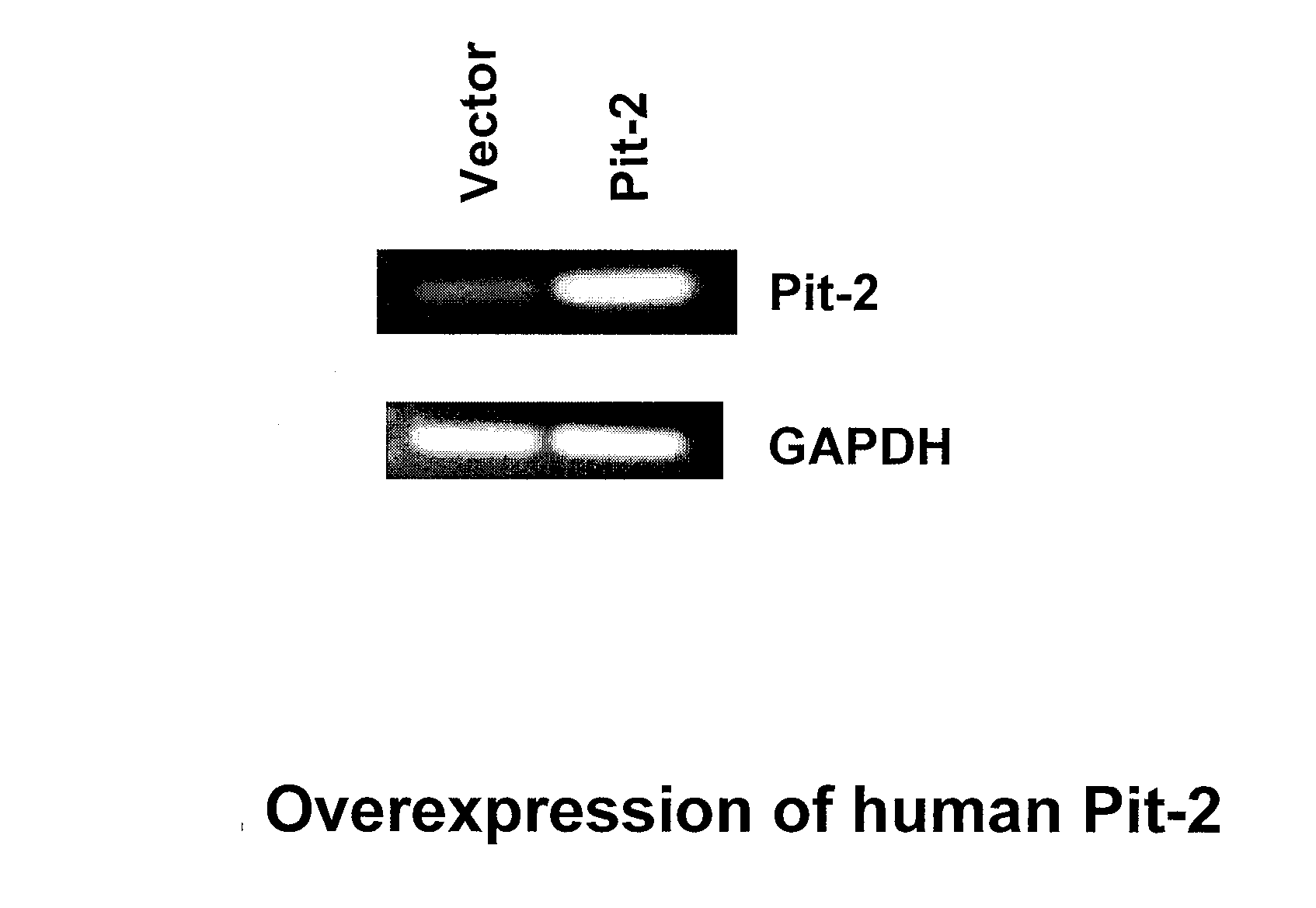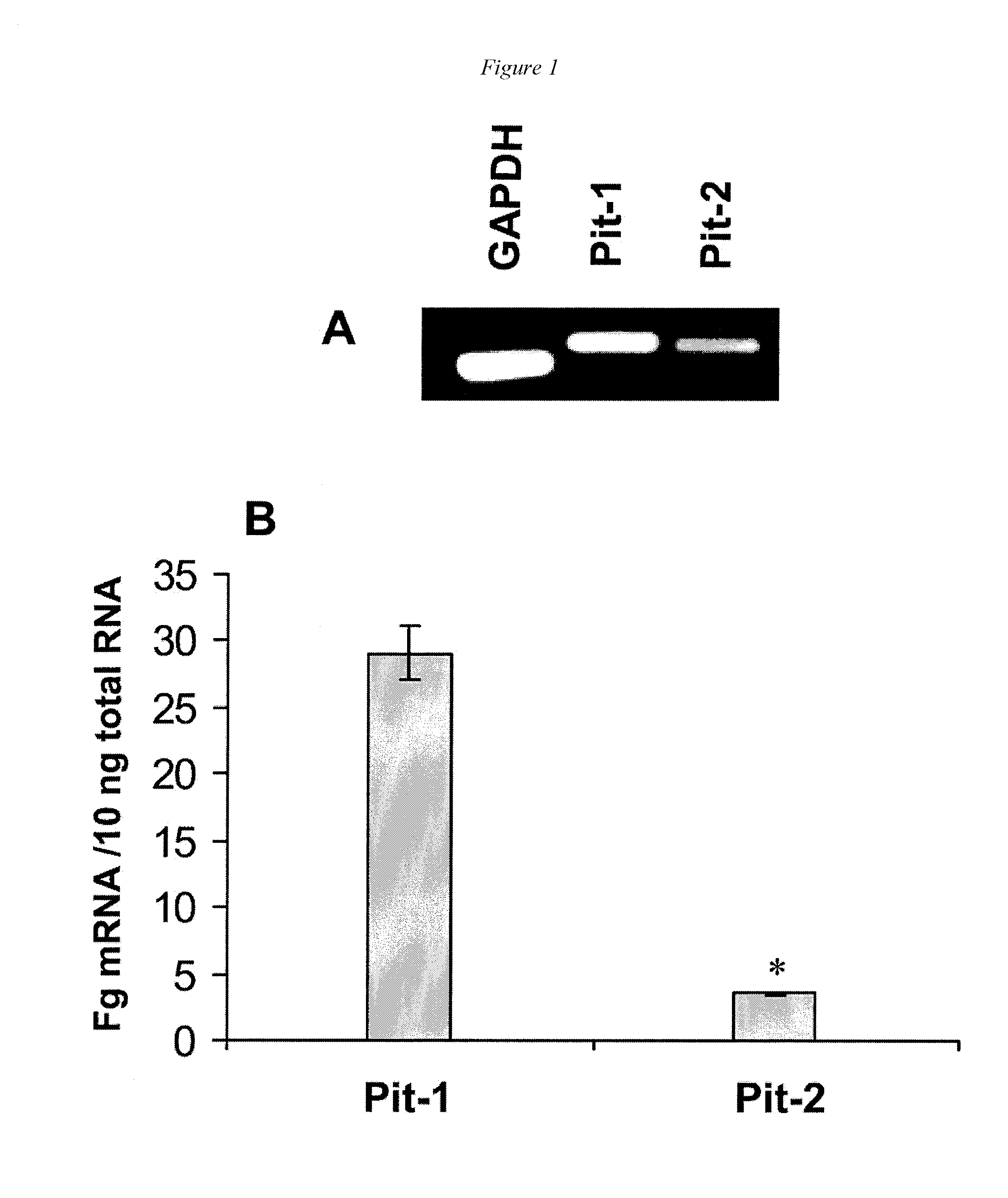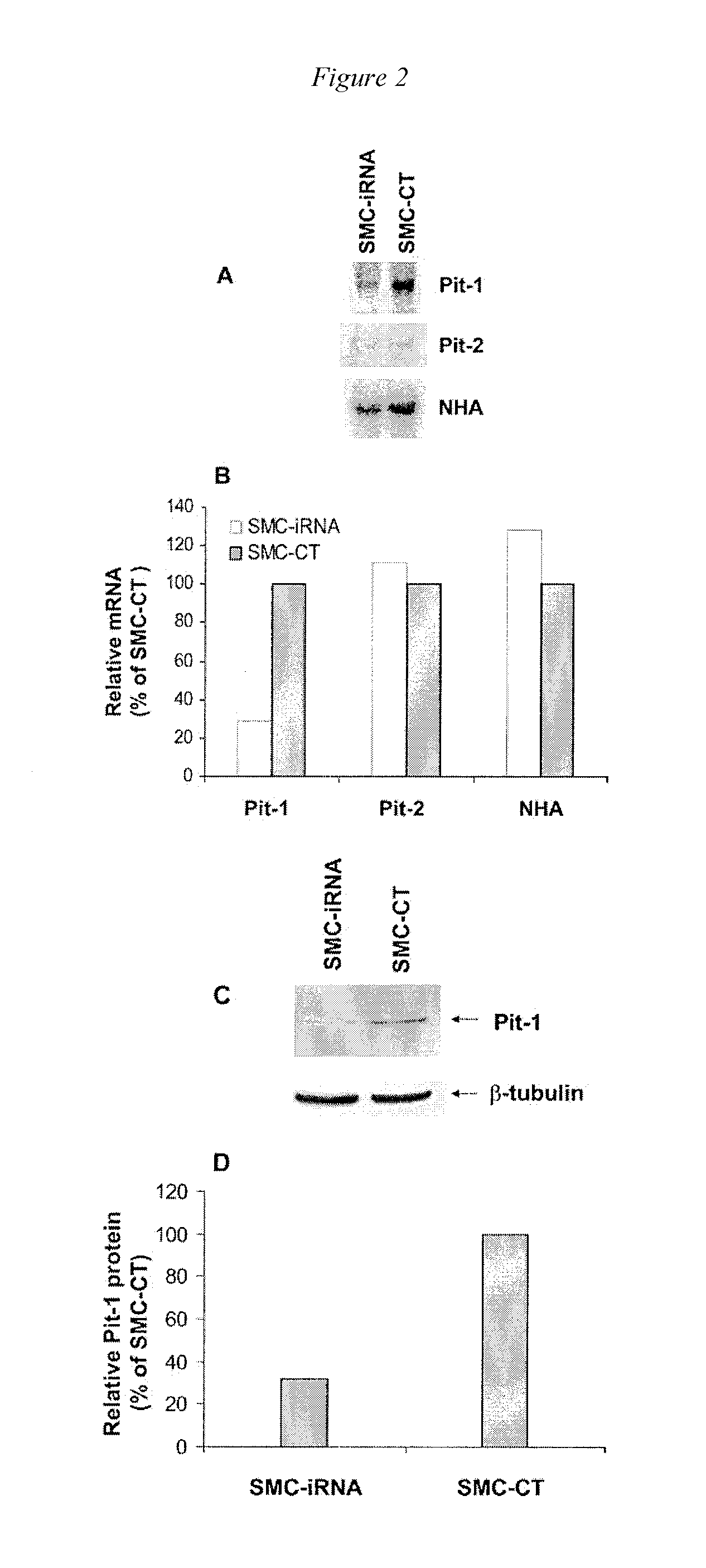Pit-1 and vascular calcification
a calcification and pit-1 technology, applied in the field of small interfering rnas, can solve the problems of increased cardiovascular morbidity and mortality, abnormal mineral metabolism is considered important risk factor, and processes that promote calcification may predominate under pathological conditions, so as to reduce pit-1 sodium-dependent phosphate transport activity, reduce vascular calcification, and reduce the effect of mrna and protein levels
- Summary
- Abstract
- Description
- Claims
- Application Information
AI Technical Summary
Benefits of technology
Problems solved by technology
Method used
Image
Examples
example 1
Pit-1 is the Predominant Sodium-Dependent Phosphate Cotransporter Expressed in Human SMC
[0127]Our previous studies indicated that sodium-dependent phosphate cotransporters might be involved in phosphate-induced SMC calcification (Jono et al., Circ Res. 2000; 87: e10-e17). To determine the expression profile of sodium-dependent phosphate cotransporters in human SMC, the abundance of type I, type II, and type III sodium-dependent phosphate cotransporters were determined initially using RT-PCR. Using this technique, no bands were obtained using primers for NPT1 (human type I family) and NaPi-3 (human type II family) (data not shown). However, a strong band at 409 bp was obtained using Pit-1 primers, and a weaker band at 384 bp was amplified using Pit-2 primers (FIG. 1A), indicating that members of the human type III family were present. Sequence analysis of these amplified fragments confirmed their identities as human Pit-1 and Pit-2, respectively (data not shown). Similar results were...
example 2
Downregulation of Pit-1 mRNA Leads to Decreased Pit-1 Protein Levels in Human SMC
[0128]Previous studies using phosphonoformic acid, a generic sodium-dependent phosphate cotransporter inhibitor, implicated a crucial role for these cotransporters in phosphate-mediated SMC calcification (Jono et al., Circ Res. 2000; 87: e10-e17). To more specifically address the role of Pit-1 in this process, RNA interference was used to suppress endogenous Pit-1 mRNA levels. SMC stably expressing Pit-1 siRNA (SMC-iRNA) or control construct (SMC-CT) were established using a retroviral system. Effects on Pit-1 expression levels were examined by Northern and Western blot analysis. As shown in FIGS. 2A and 2B, Pit-1 mRNA levels were dramatically reduced (80%) in SMC-iRNA compared with levels in SMC-CT. Western blotting confirmed a comparable decrease in Pit-1 protein levels in SMC-iRNA (FIGS. 2C and 2D).
[0129]To determine the specificity of the Pit-1 siRNA, mRNA levels of 2 other membrane transporters, Pi...
example 3
Inhibition of Sodium-Dependent Phosphate Uptake by Pit-1 siRNA
[0130]To determine whether decreased Pit-1 mRNA and protein levels translated to decreased Pit-1 function, phosphate uptake assays were performed in SMC-iRNA and SMC-CT (as noted in the general methods section of the Examples, noted above). As shown in FIGS. 3A and 3B, phosphate uptake was concentration and time-dependent in both cell types. However, overall phosphate uptake was substantially decreased in SMC-iRNA compared with SMC-CT at all concentrations (at 30 minutes in 1.5 mmol / L Pi, SMC-iRNA versus SMC-CT: 2.90 versus 9.78 nmol / mg protein, respectively). Likewise, phosphate uptake was substantially decreased in SMC-iRNA compared with SMC-CT at all time points (at 120 minutes in 0.1 mmol / L Pi, SMC-iRNA versus SMC-CT: 11.27 versus 21.90 nmol / mg protein, respectively). These results indicated that a decrease in cellular Pit-1 levels caused by the Pit-1 siRNA resulted in a comparable decrease in phosphate uptake. No eff...
PUM
| Property | Measurement | Unit |
|---|---|---|
| Length | aaaaa | aaaaa |
Abstract
Description
Claims
Application Information
 Login to View More
Login to View More - R&D
- Intellectual Property
- Life Sciences
- Materials
- Tech Scout
- Unparalleled Data Quality
- Higher Quality Content
- 60% Fewer Hallucinations
Browse by: Latest US Patents, China's latest patents, Technical Efficacy Thesaurus, Application Domain, Technology Topic, Popular Technical Reports.
© 2025 PatSnap. All rights reserved.Legal|Privacy policy|Modern Slavery Act Transparency Statement|Sitemap|About US| Contact US: help@patsnap.com



